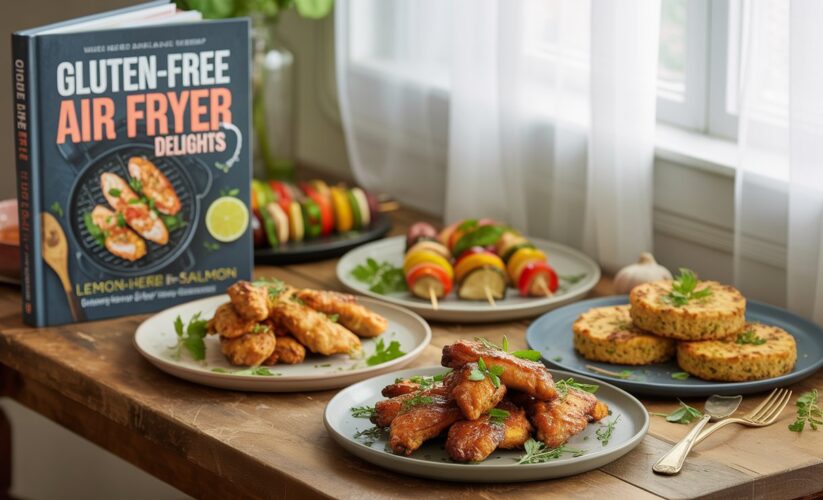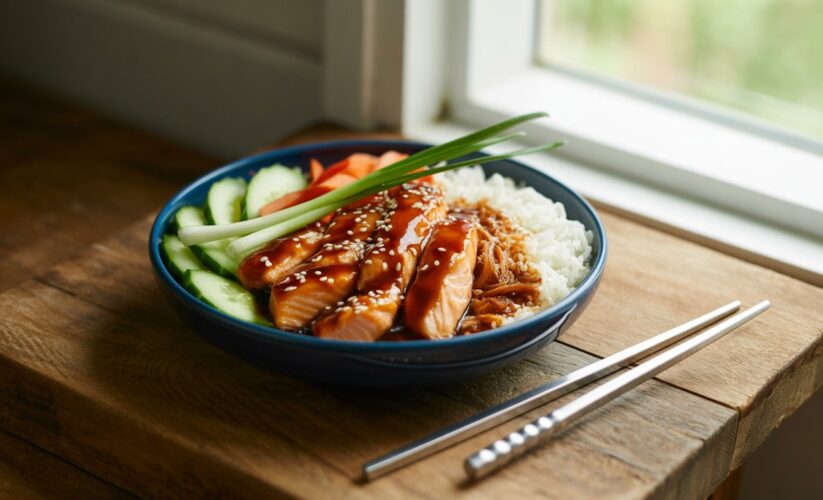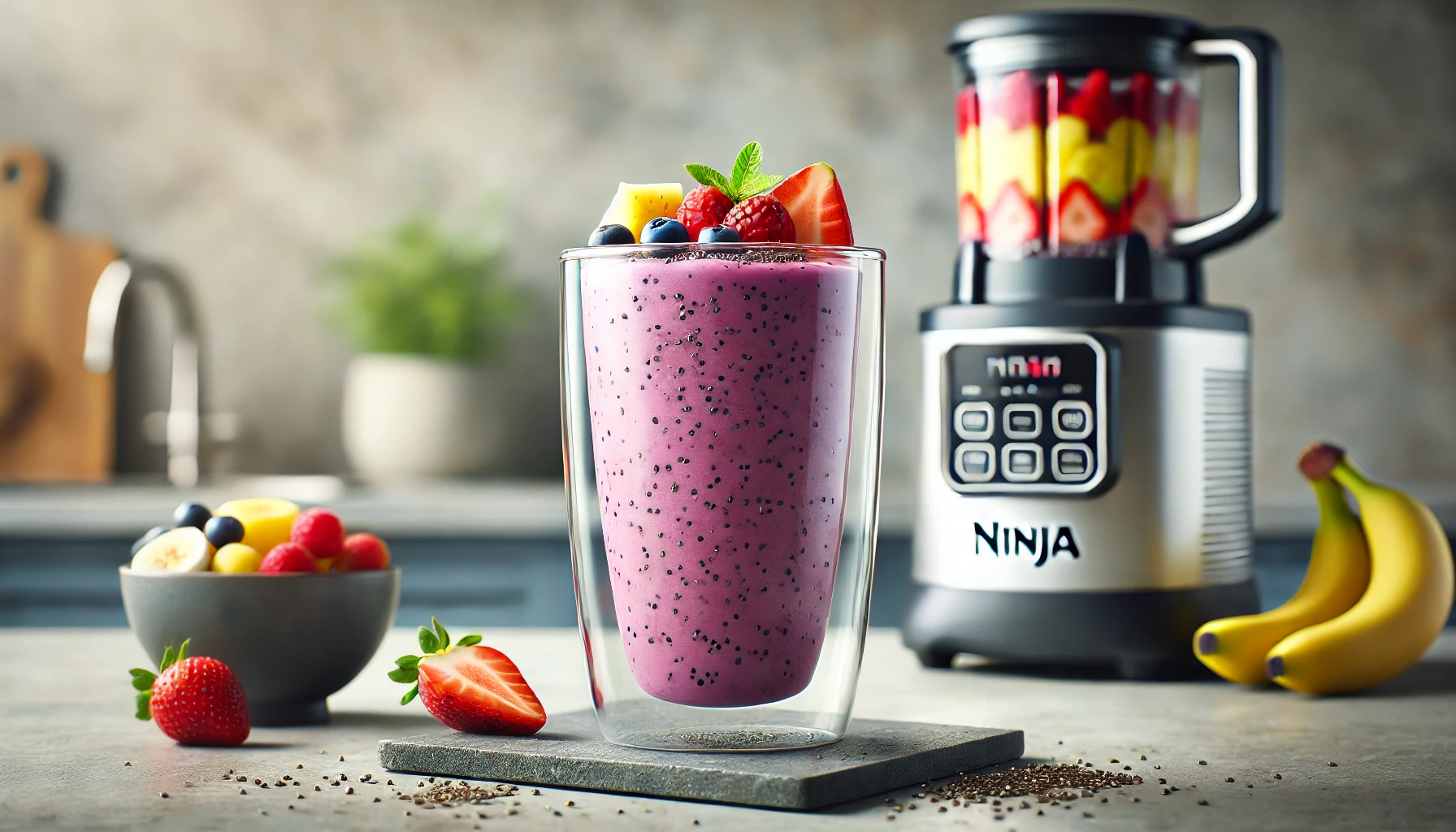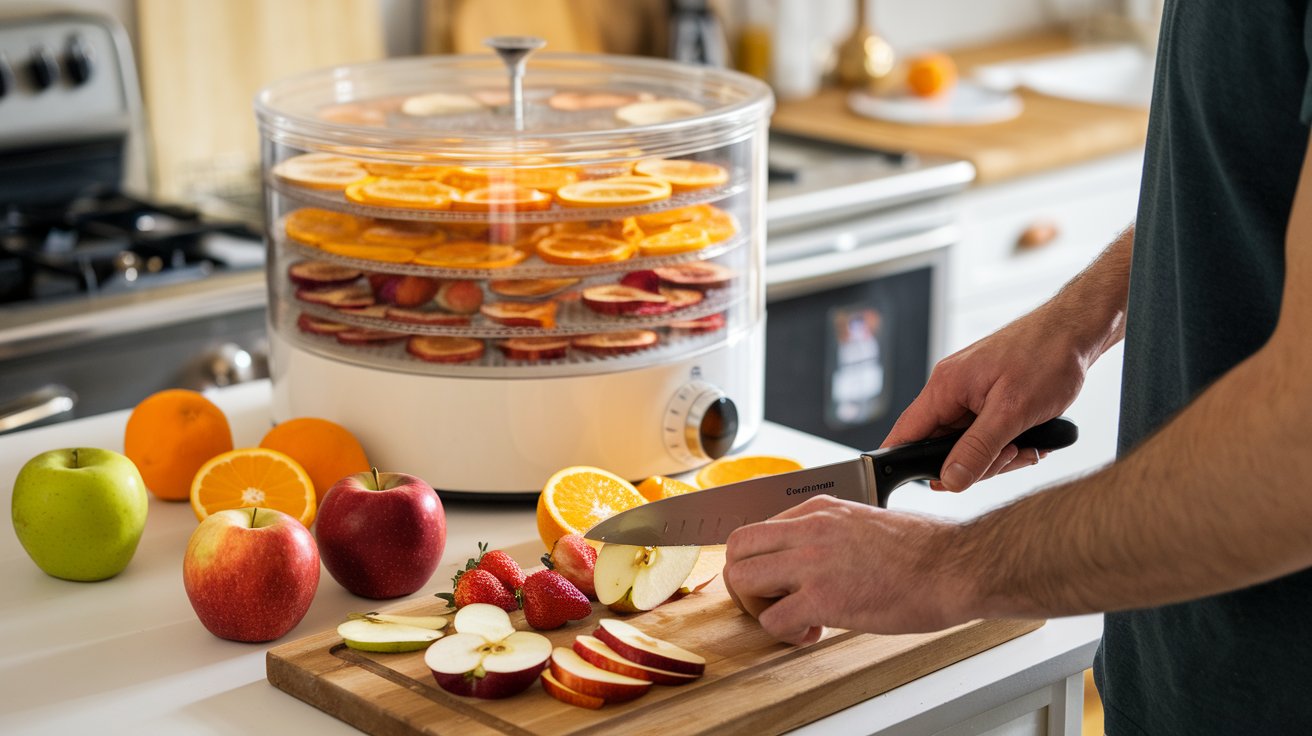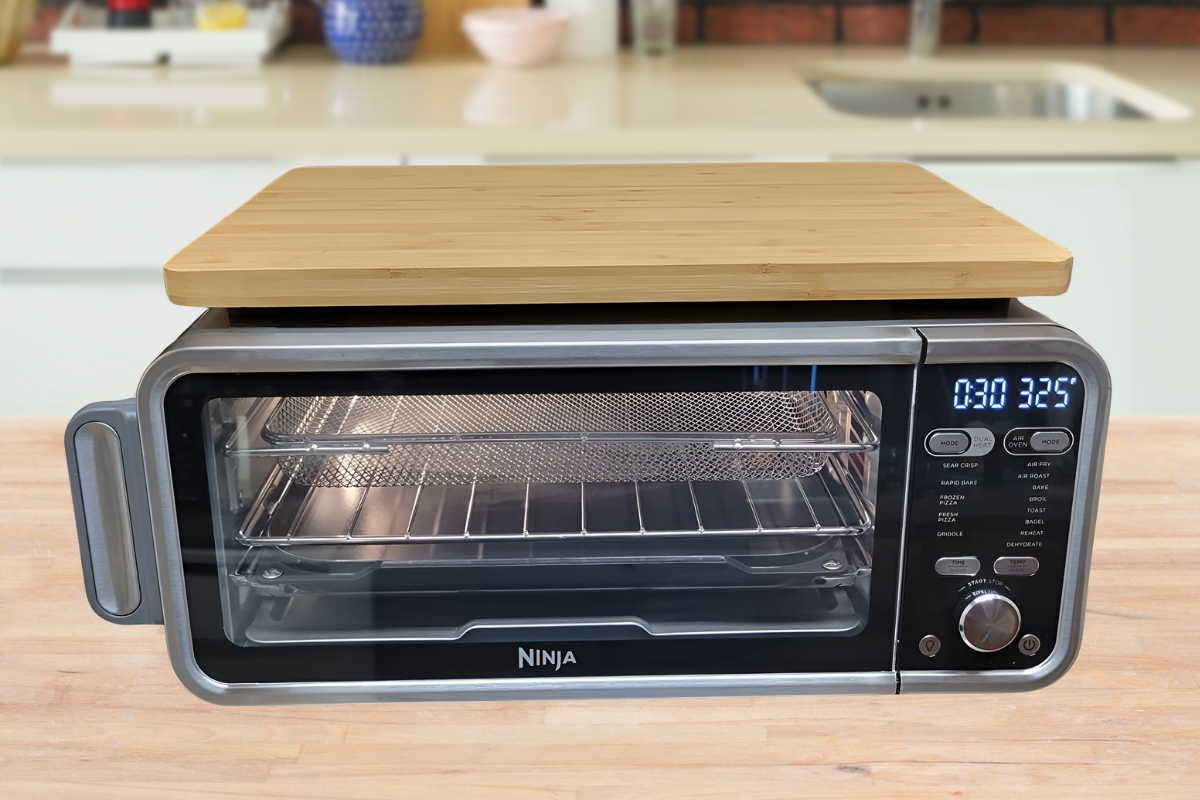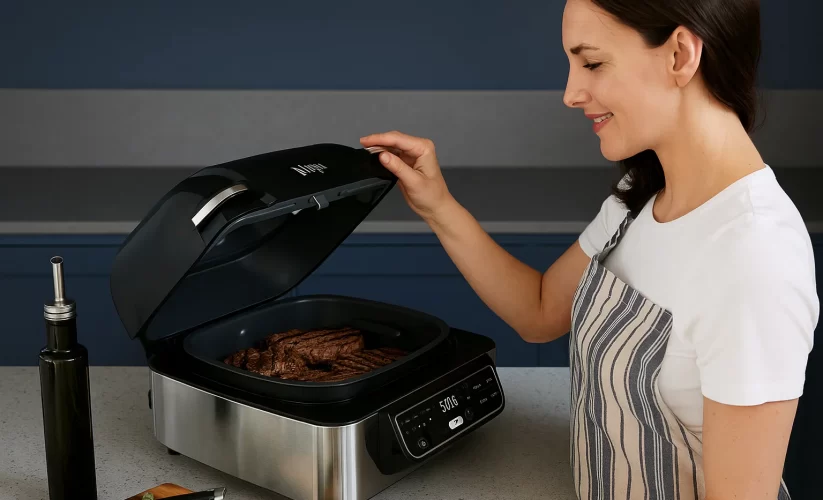
Ninja Foodi Lid Won’t Close: Quick Fixes
The familiar click of a pressure cooker lid locking into place signals the start of another delicious meal. But what happens when that satisfying sound is replaced by frustration as your Ninja Foodi lid won’t close properly? This common issue can turn meal preparation from a joy into a stressful ordeal, leaving home cooks wondering if their beloved appliance has reached the end of its useful life.
Understanding why your Ninja Foodi lid won’t close and knowing how to fix it can save both time and money while getting you back to creating amazing meals. Most lid closure problems stem from simple mechanical issues that can be resolved with basic troubleshooting techniques.
Key Takeaways
- Food debris and residue are the most common causes of lid closure problems
- Sealing ring misalignment can prevent proper lid engagement
- Simple cleaning and maintenance resolve 90% of lid closure issues
- Component wear may require replacement parts but rarely means total appliance failure
- Proper storage and handling prevent most lid problems from occurring
“Regular maintenance is the key to keeping any pressure cooking appliance functioning properly. A clean appliance is a reliable appliance.”
– Kitchen Appliance Maintenance Guide
- REPLACES 14 COOKING TOOLS and APPLIANCES: This cooker replaces the need for a slow cooker, steam oven, food warmer, nonstick pot, sauté pan, cast iron skillet, saucier, steamer, saucepan, stock pot, Dutch oven, roasting pan, bread maker, and utensil.
- SEAR and SAUTÉ DIRECTLY IN THE POT: Using the bottom heating elements, you are able to sear proteins and sauté vegetables right in the cooking pot—no need to transfer to the stovetop.
- OVEN SAFE TO 500 degree F: Removable cooking pot is oven safe up to 500 degree F, so you can finish your meal in the oven for a crispy top.
- 2 INDEPENDENT BASKETS: The original Air Fryer with 2 independent baskets, the XL air fryer lets you cook 2 foods, 2 ways, at the same time, eliminating back-to-back cooking like a traditional single-basket air fryer.
- SMART FINISH & MATCH COOK: DualZone Technology allows you to choose between the Smart Finish feature, which unlocks cooking 2 foods 2 ways that finish at the same time, and the and a Match Cook button to easily copy settings across zones for full 8-qt capacity.
- 6-IN-1 FUNCTIONALITY: Includes 6 versatile cooking programs: Air Fry, Air Broil, Roast, Bake, Reheat, and Dehydrate. The baskets can be washed in the dishwasher or by hand.
- NINJA FOODI GRILL: The grill that sears, sizzles, and air fry crisps. New exterior look with all the great functions you love from the original Foodi Grill.
- 6 VERSATILE FUNCTIONS: Grill, Air Crisp, Roast, Bake, Broil, and Dehydrate functions enabled by wide temperature range.
- CYCLONIC GRILLING TECHNOLOGY: Uses 500°F cyclonic air to perfectly cook or char-grill your food to your desired doneness on the grill grate for delicious, char-grilled marks and flavors.
Understanding Your Ninja Foodi’s Locking Mechanism
The Ninja Foodi features a sophisticated yet straightforward locking system designed to ensure safe pressure cooking. The lid contains multiple components that must align perfectly for proper closure, including the sealing ring, pressure release valve, and locking mechanism itself.
When functioning correctly, the lid should close with minimal resistance and lock securely with an audible click. Any deviation from this smooth operation indicates a problem that needs attention before the next cooking session.
Common Symptoms of Lid Closure Problems
Several warning signs indicate lid closure issues developing. The lid may feel loose when attempting to close, refuse to engage the locking mechanism entirely, or close but fail to maintain proper pressure during cooking. Some users notice the lid appears to close but doesn’t create the tight seal necessary for pressure cooking functions.
These symptoms rarely appear suddenly but develop gradually as debris accumulates or components wear over time. Early intervention can prevent minor issues from becoming major problems requiring expensive repairs or replacement parts.
The Most Common Culprit: Food Debris and Residue
Food particles, grease, and cooking residue rank as the primary cause of Ninja Foodi lid closure problems. These substances accumulate in the lid’s grooves, around the sealing ring, and within the locking mechanism itself, creating barriers that prevent proper alignment and closure.
Steam and pressure cooking can force tiny food particles into areas that seem impossible to reach during routine cleaning. Over time, these particles harden and create significant obstacles to proper lid function.
Deep Cleaning the Lid Assembly
Start the cleaning process by removing the lid completely from the base unit. Disassemble removable components including the sealing ring, pressure release valve, and any other detachable parts according to the manufacturer’s instructions.
Soak removable components in warm, soapy water for at least thirty minutes to loosen stubborn residue. Use a soft brush or cloth to gently scrub away accumulated debris, paying special attention to grooves and crevices where particles tend to collect.
For the lid housing itself, wipe down all surfaces with a damp cloth, ensuring no moisture enters electrical components. A toothpick or small brush can help remove debris from tight spaces, but avoid using metal tools that might damage delicate surfaces.
Sealing Ring Issues and Solutions
The rubber sealing ring plays a crucial role in both lid closure and pressure cooking performance. This flexible component can shift out of position, stretch with use, or accumulate debris that prevents proper seating within its groove.
Proper Sealing Ring Installation
Remove the sealing ring completely and inspect it for damage, stretching, or embedded debris. Clean the ring thoroughly with warm, soapy water and check the groove where it sits for accumulated residue or damage.
When reinstalling the sealing ring, ensure it sits evenly within its designated groove around the entire circumference. The ring should lie flat without twists, bunching, or gaps that could compromise the seal or interfere with lid closure.
A properly installed sealing ring creates a uniform barrier around the lid’s perimeter and doesn’t protrude beyond the lid’s edge or interfere with the locking mechanism’s operation.
Locking Mechanism Maintenance
The mechanical components responsible for securing the lid require periodic attention to maintain smooth operation. If your Ninja Foodi lid won’t close, it may be due to cooking residue buildup, normal wear on the locking parts, or minor misalignments. Regular cleaning and simple adjustments can often restore proper function and prevent future lid closure issues.
Adjusting and Cleaning Lock Components
Examine the locking mechanism for visible debris or damage while the lid is removed from the unit. Gently wipe these components with a damp cloth, being careful not to force any moving parts or apply excessive pressure.
Test the locking mechanism’s movement by gently manipulating the relevant components according to the manufacturer’s guidelines. The mechanism should move smoothly without binding, excessive resistance, or unusual noises that might indicate internal damage.
If cleaning doesn’t restore proper operation, consult the user manual for specific adjustment procedures or contact customer support for guidance on whether replacement parts might be necessary.
Pressure Release Valve Problems
The pressure release valve serves multiple functions in the Ninja Foodi system and can affect lid closure when not operating correctly. This component must move freely and seat properly to ensure safe pressure cooking operation.
Valve Inspection and Cleaning
Remove the pressure release valve if the design allows and inspect it for damage or obstruction. Food particles can become lodged within the valve assembly, preventing proper movement and potentially interfering with lid closure.
Clean the valve thoroughly with warm water and ensure all moving parts operate smoothly before reinstallation. The valve should move freely between positions without binding or requiring excessive force.
Test the valve’s operation after cleaning by gently moving it through its full range of motion. Any resistance, unusual noises, or failure to return to the proper position may indicate the need for replacement parts.
When Components Need Replacement
Despite careful maintenance, some Ninja Foodi components eventually require replacement due to normal wear or damage. Recognizing when cleaning and adjustment won’t resolve the problem can save time and prevent safety issues.
Identifying Worn or Damaged Parts
Inspect all lid components for visible signs of wear including cracks, stretching, warping, or permanent deformation. The sealing ring, in particular, may lose elasticity over time and fail to create proper seals even when correctly installed.
Metal components might show signs of corrosion, excessive wear, or damage that prevents proper operation. Any component that doesn’t return to its original position after manipulation likely requires replacement.
Contact the manufacturer or authorized parts dealers to obtain genuine replacement components designed specifically for your Ninja Foodi model. Using incorrect or aftermarket parts can compromise safety and performance.
Preventive Maintenance Strategies
Regular maintenance prevents most lid closure problems and extends the overall lifespan of your Ninja Foodi. Establishing consistent cleaning routines and proper storage practices keeps components functioning smoothly.
Daily and Weekly Maintenance Routines
After each use, wipe down the lid and removable components with a damp cloth to prevent residue buildup. Remove and clean the sealing ring weekly, even if the appliance appears clean, to prevent debris accumulation in hard-to-see areas.
Inspect all components monthly for signs of wear or damage that might affect performance. Early detection of problems allows for preventive measures before complete component failure occurs.
Store the Ninja Foodi with the lid slightly ajar to allow air circulation and prevent moisture buildup that can contribute to component degradation over time.
Troubleshooting Persistent Problems
Some lid closure issues persist despite thorough cleaning and maintenance efforts. These situations often require systematic troubleshooting to identify underlying causes and appropriate solutions.
Step-by-Step Diagnostic Process
Begin troubleshooting by ensuring the unit is completely clean and all components are properly installed according to manufacturer specifications. Test the lid closure with the unit empty to eliminate variables related to food or accessories.
If problems persist, consult the user manual for model-specific troubleshooting guides or contact customer support for technical assistance. Document any error messages, unusual sounds, or specific behaviors that might help diagnose the issue.
Consider environmental factors such as altitude, humidity, or temperature that might affect appliance performance in some regions or seasons.
Safety Considerations
Lid closure problems can create safety hazards if not properly addressed. Never attempt to force a lid closed or operate the pressure cooking function when the lid doesn’t close properly.
Safe Operation Guidelines
Always ensure the lid closes completely and locks securely before beginning any pressure cooking cycle. A improperly secured lid can fail during cooking, creating dangerous situations with hot food and steam.
If the lid won’t close properly, discontinue use immediately and resolve the issue before attempting to cook. Use alternative cooking methods until the problem is completely resolved and verified through testing.
Never bypass safety mechanisms or attempt temporary fixes that might compromise the appliance’s safe operation. The extra time spent on proper repairs ensures safe cooking experiences for years to come.
Professional Repair vs. DIY Solutions
Most Ninja Foodi lid closure problems can be resolved through cleaning and basic maintenance that any home cook can perform safely. However, some situations require professional attention or manufacturer support.
When to Seek Professional Help
Contact professional repair services or the manufacturer when problems persist despite thorough cleaning and component replacement. Electrical issues, internal mechanism failures, or repeated component failures may indicate underlying problems requiring technical expertise.
If the appliance is still under warranty, contact the manufacturer before attempting extensive repairs that might void coverage. Many common problems are covered under standard warranty terms.
Document all troubleshooting efforts and maintenance performed when contacting support services. This information helps technicians quickly identify potential causes and recommend appropriate solutions.
Conclusion
A Ninja Foodi lid won’t close situation doesn’t have to signal the end of your pressure cooking adventures. Most closure problems stem from simple maintenance issues that can be resolved with basic cleaning and component care.
Regular maintenance, proper cleaning techniques, and attention to component wear can prevent the majority of lid closure problems before they develop. When issues do arise, systematic troubleshooting and appropriate replacement of worn components usually restore full functionality.
The investment in proper maintenance and occasional replacement parts is minimal compared to the cost of replacing the entire appliance. With proper care, your Ninja Foodi can continue providing years of reliable cooking performance and delicious meals for your family.
Remember that safety should always be the primary consideration when dealing with pressure cooking appliances. Take the time to properly diagnose and resolve Ninja Foodi lid won’t close issues rather than attempting to work around them, ensuring safe and enjoyable cooking experiences for years to come.
Frequently Asked Questions
Q: How often should I clean my Ninja Foodi lid components?
A: Clean the lid and removable components after each use with a damp cloth. Perform deep cleaning of the sealing ring and other components weekly, and conduct thorough inspections monthly to catch potential issues early.
Q: Can I use my Ninja Foodi if the lid closes but feels loose?
A: No, never use the pressure cooking function if the lid doesn’t close securely with an audible click. A loose lid can fail during cooking, creating dangerous situations. Resolve the closure issue completely before using the appliance.
Q: How do I know if my sealing ring needs replacement?
A: Replace the sealing ring if it shows cracks, permanent stretching, loss of elasticity, or fails to create a proper seal even when correctly installed. Most sealing rings need replacement every 12-18 months with regular use.
Q: What should I do if cleaning doesn’t fix the lid closure problem?
A: If thorough cleaning doesn’t resolve the issue, inspect all components for wear or damage. Try replacing the sealing ring first, as this is the most common worn component. If problems persist, contact customer support for further troubleshooting.
Q: Is it safe to force the lid closed if it’s slightly resistant?
A: Never force a resistant lid closed, as this can damage the locking mechanism or other components. Resistance usually indicates debris, misalignment, or component wear that needs to be addressed before the appliance can be safely used.
Last update on 2025-10-19 / Affiliate links / Images from Amazon Product Advertising API
*We may earn a commission for purchases made using our links. Please see our disclosure to learn more.




